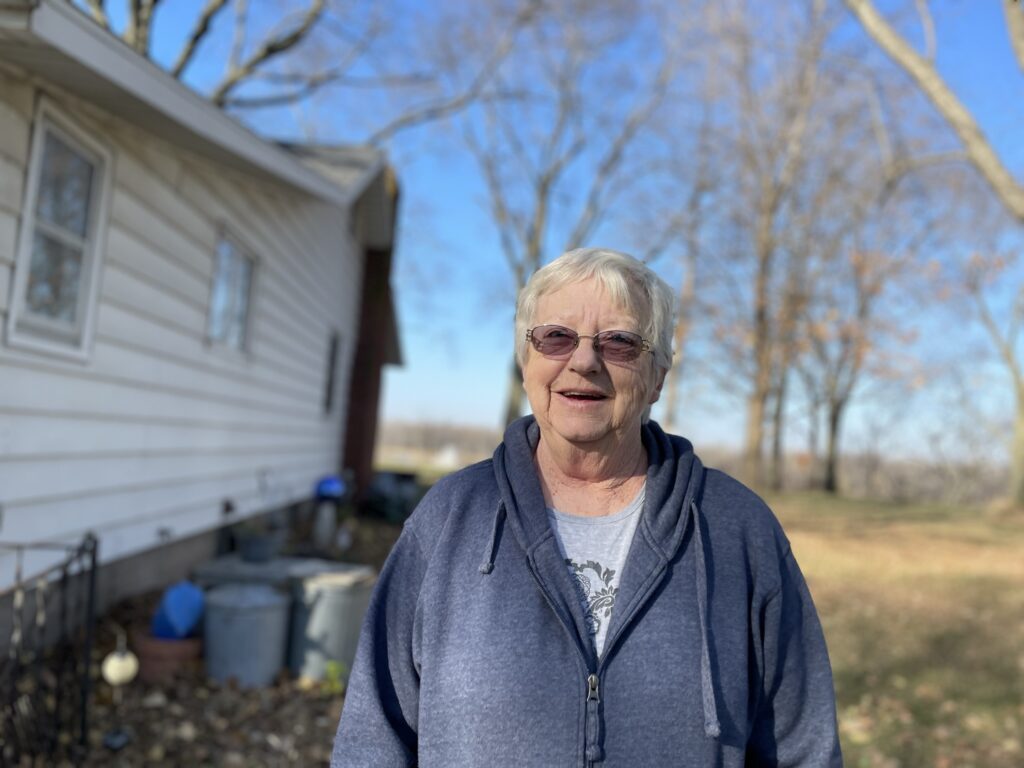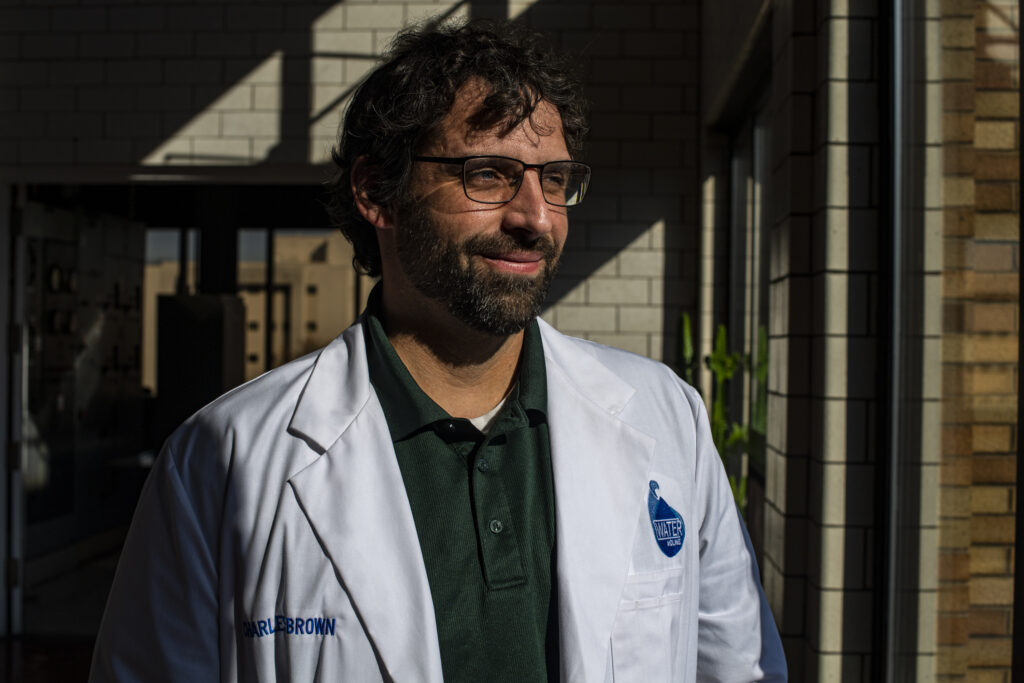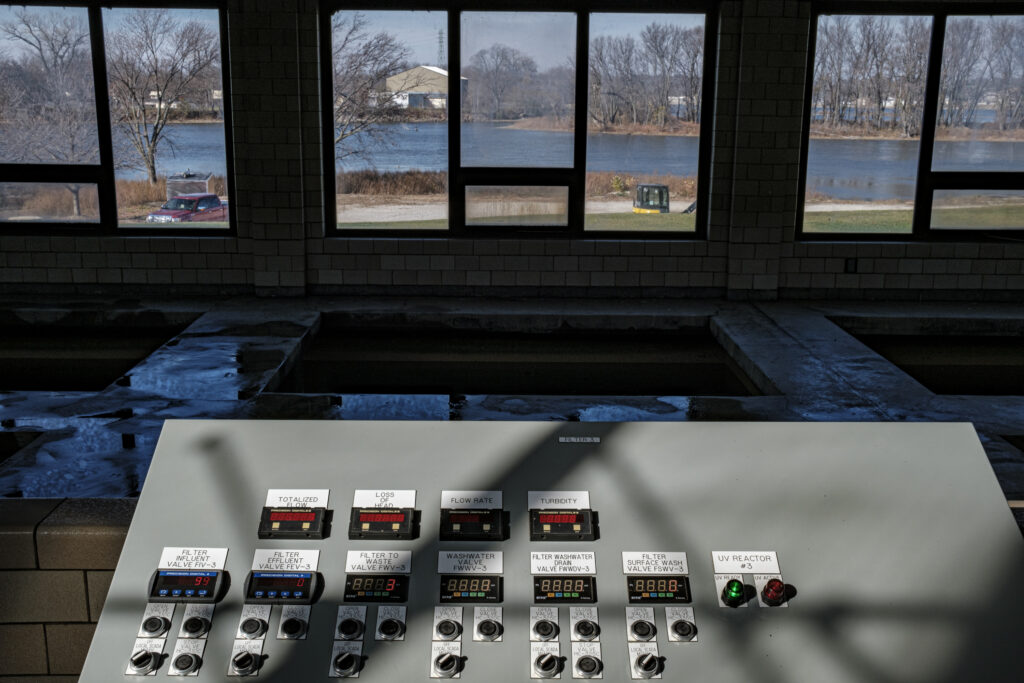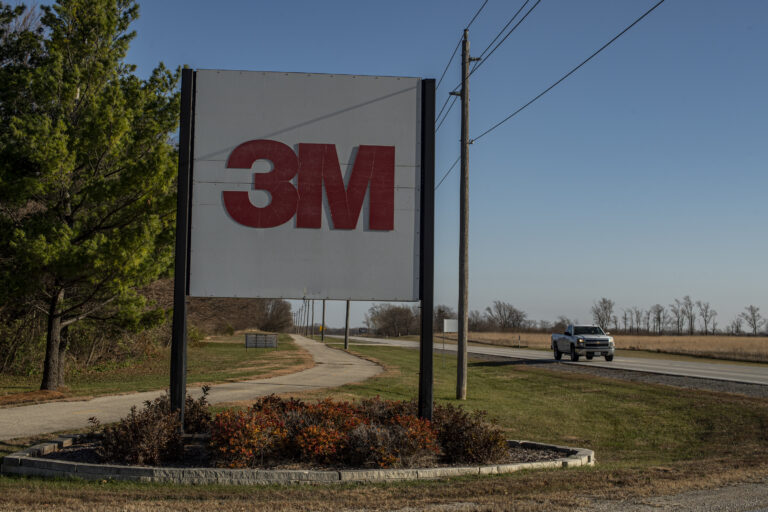CORDOVA, Ill. – This fall, the towns and rural farmsteads along the Mississippi River received alarming news about their drinking water. Chemicals from a large 3M factory north of Cordova found a way into the river and their wells.
Listen to this story here.
The facility employs about 500 people and makes the adhesives used in Post-It notes, Scotch tape and other popular products. It also produces a family of chemicals called PFAS, otherwise known as “forever chemicals,” whose threat to human health has prompted increasing concern among federal and state environmental agencies.
Water and wastewater sampling by the Environmental Protection Agency (EPA) in 2019 detected the chemicals. Now the agency says the drinking water of nearly 300,000 people, including the Quad Cities of Illinois and Iowa, will need additional testing to ensure it is safe.
Earlier this month, the EPA announced that PFAS contamination from the 3M factory has created “an imminent and substantial endangerment” of public and private drinking water supplies. In a Nov. 2 EPA order, Minnesota-based 3M agreed to investigate PFAS contamination in private wells and public water systems up to 10 miles away from the plant.
The situation has left local officials in a dilemma: they want to reassure people about their drinking water, even as they face unanswered questions about health risks and who will pay to clean up the contamination.

City officials in Camanche, Iowa, announced in September that the municipal water, which serves almost 4,600 people, tested positive for two of the chemicals above EPA limits.
The city advised residents to contact their health care providers or consider installing home filters. Now, officials are informing water customers that the city is seeking “expert guidance” from state and federal authorities and will provide more information when it becomes available.
“As of right now, we are in a ‘test and wait’ phase on PFAS issues,” Camanche Public Works Director Gaylon Pewe wrote on the city’s website. City officials did not respond to a request for an interview.
Their announcements have not eased the fears of several Camanche residents, who on social media reacted to the city’s latest press release with dismay. Is the water safe to drink, several asked.
“If it’s that serious, you know, do some surveys and find out what’s going on,” Camanche resident Gary Hopkins, 78, said in an interview. “Then get it to the doctors and the scientists and figure out what they can do to stop it.”

The 3M plant has been a fixture in Cordova since the facility opened in 1970. The EPA permits the company to discharge its wastewater into the Mississippi River, but 3M must monitor it for PFAS.
In 2019, 3M informed the agency it was releasing more of the chemicals from the factory than previously reported. Testing has revealed the presence of at least 60 PFAS analytes within the vicinity.
PFAS, or per- and polyfluoroalkyl substances, are a class of human-made compounds that do not break down easily in the environment and bioaccumulate in organisms. Some are linked to a range of health problems like altered hormone levels, decreased birth weight, digestive inflammation and ulcers, high cholesterol, hypertension in pregnancy, kidney and testicular cancers and reduced vaccine effectiveness in children.
They are ubiquitous in consumer and industrial products, but for people living near contaminated sites, drinking water is typically the main source of exposure of the odorless and tasteless chemicals.
In June, the EPA updated draft health advisories for PFOA and PFOS to levels so low as to suggest that no amount of PFAS is safe for consumption — a lifetime limit of 0.004 parts per trillion and 0.02 ppt of the two compounds, respectively — equivalent to just a few drops in the combined volume of water in thousands of swimming pools.
This summer, 3M began testing some of the drinking water near Cordova for PFAS and offered to sample about 190 private wells within a 3-mile radius of the plant. The company later started to contact private well owners with an offer to install in-home water treatment systems, regardless of their sampling results.
Under the EPA order, 3M now must offer well sampling to properties within a 4-mile radius of the plant that were not previously included in its outreach. Testing can begin after the agency approves a work plan the company will submit by early December.
Meanwhile, 3M is required to test area public water suppliers within 10 miles of the plant. An agency spokesperson declined to say what specific actions the EPA might take if testing reveals contamination in those facilities.

The agency also ordered 3M to develop a special work plan for the city of Camanche, located north of the Cordova plant in Iowa. The plan must include the provision of an alternative drinking water supply or water treatment.
Grant Thompson, a 3M spokesperson, directed people who are concerned about the safety of their drinking water to government websites that address “PFAS-related questions.”
The city of Camanche has issued similar advice.
Numerous river communities downstream of the plant have detectable levels of PFAS in their water treatment systems and continue to test for the chemicals.
Charlie Brown, utilities lab manager for the city of Moline, said PFAS removal is expensive, and there are downsides to taking action too soon.
Treatment standards are likely to change next year when the EPA announces its final recommendations for four PFAS chemicals, he said. Research on PFAS removal also is apt to provide water plant operators with additional treatment options in coming years.
Brown said Moline residents contacted him several months ago to inquire if they can drink their water.
“Of course the water is safe,” Brown said. “We wouldn’t put it out if it wasn’t, and we would let people know.”
Moline tests city water quarterly. Results from December 2021 indicated two PFAS compounds exceeded the EPA’s guidelines, but just one tested above the state of Illinois’ health advisory limit, which is less stringent.
“We’ll have to wait to see where more funding comes for the actual treatment,” Brown said. “But we don’t want to get ahead of ourselves in treatment until we know what the (final EPA PFAS) limits are going to be and, then, what the science will be for treatment.”

3M has faced several legal cases for PFAS production. Other than in Cordova, it has two major US plants that produce the chemicals: in the Twin Cities, Minnesota and in Decatur, Alabama. The state of Minnesota sued the company over mismanaged PFAS waste from its Cottage Grove plant and in 2018 settled for $850 million to treat drinking water there. 3M also settled multiple lawsuits in Alabama last year for $99 million.
But perhaps the most significant situation centered on the company’s chemical plant near Antwerp, Belgium, where Flemish authorities briefly shut down production of the chemicals. 3M ultimately struck a $600 million remediation deal.
David Cwiertny, a University of Iowa engineering professor and director of the Center for Health Effects of Environmental Contamination, said if his drinking water tested positive for PFAS, he would install a home water treatment system, such as carbon filters or reverse osmosis.
“It’s jarring to have your water supply be something that you immediately don’t trust,” he said. “And even with treatment, a lot of people won’t trust what’s coming out of their taps, and that trust is hard to regain and rebuild.”
As communities surrounding Cordova grapple with the difficult cleanup ahead, Cwiertny said, it is all but certain they will not be the last.
Linda Vaughn, a retired school bus driver, lives about four miles from the 3M plant on the Illinois side of the river. She already avoids what comes out of her well, but wonders whether she will have to do more. Vaughn drinks bottled water, while her husband drinks filtered water from their refrigerator.
“I don’t know if that covers it,” she said. “I don’t think we’ve had any problems so far. And my husband’s in his 70s. I’m in my 70s.”
Chloe Johnson of The Minneapolis Star Tribune contributed to this story.
This story is a product of the Mississippi River Basin Ag & Water Desk, an editorially independent reporting network based at the University of Missouri School of Journalism in partnership with Report For America and the Society of Environmental Journalists, funded by the Walton Family Foundation.

